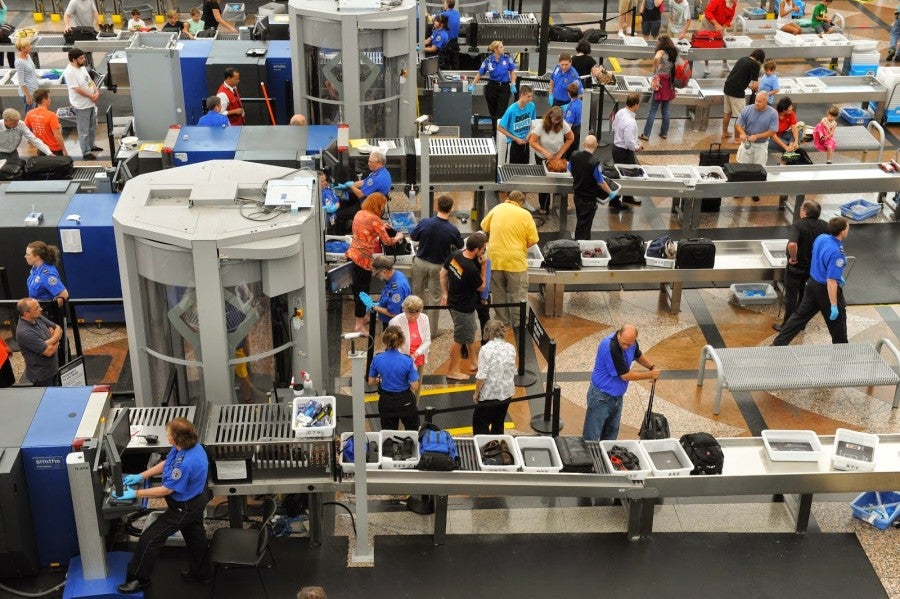The TSA Is Testing Ways to Eventually Keep Laptops in Bags for Everybody
The Transportation Security Administration is testing a screening method that may eventually result in passengers, even those who do not have TSA PreCheck, keeping laptops in their bags. The TSA is trying out the new screening in Las Vegas and may one day expand it nationwide.
On Tuesday the TSA announced that it had opened a new facility on the lower level of Terminal 3 at Las Vegas' McCarran International Airport, part of what the agency has dubbed the Advancing the Checkpoint Environment program or ACE.
"This is a space that will allow us to assess new technology and processes," said Jose Bonilla, the director of TSA's Innovation Task Force, on a conference call. "It will allow us to demonstrate a unique network of capabilities without impacting their current operation."
The regular Terminal 3 TSA checkpoints are on the building's upper level, but the ACE facility is located downstairs. For now, only domestic passengers flying United Airlines will be able to use ACE lanes, though an airport representative said that could expand to other domestic and international airlines in the future. The checkpoint is also only open for approximately four hours a day Sunday through Thursday.
For passengers, going through ACE can mean they get to leave their laptops in their bags even if they don't have Precheck, and also may mean a faster security screening overall, since fewer passengers will be processed through the experimental lanes than the traditional ones. Passengers who get sent to the ACE lanes — at the TSA's discretion — will bypass the traditional checkpoints in Terminal 3.
Related: The Top 7 Cards for Global Entry and TSA PreCheck

For now, the main trials at LAS involve advanced imaging machines that use CT technology to look into your carry-on bags. The resulting images are more detailed than traditional X-ray scans, and that is why passengers may leave items in their bags. Similar machines are being tested at other airports, too, including at JFK's Terminal 8. As ACE gets up to speed, other new technologies and procedures will likely be introduced. One of the primary purposes of the ACE facility is to allow multiple different kinds of technology and procedures to be tested in conjunction with each other.
Even in the ACE lanes, though, Bonilla said passengers currently still have to remove their liquids and take off their shoes. But, he added, that may not be the case forever: "The procedures will change as the technology evolves."
Bonilla said that feedback from passengers who pass through the ACE lanes and the agents who manage them will be important in evaluating the new technologies being tested there, and can help the TSA decide if and how to roll new machines and procedures out more broadly.
So far, according to Bonilla, passengers seem to like the innovations that have been introduced. The ACE lanes had a "soft launch" on June 19.
"When we kicked it off, the very first two passengers that came by were a couple," he said. "Their first question was 'Oh my God, are you going to do this everywhere?'" Although the tests at ACE are not necessarily a precursor to new screening procedures nationwide, Bonilla said they may eventually appear at other airports.
